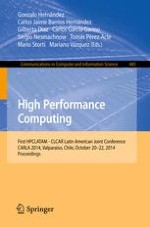2014 | Buch
High Performance Computing
First HPCLATAM - CLCAR Latin American Joint Conference, CARLA 2014, Valparaiso, Chile, October 20-22, 2014. Proceedings
herausgegeben von: Gonzalo Hernández, Carlos Jaime Barrios Hernández, Gilberto Díaz, Carlos García Garino, Sergio Nesmachnow, Tomás Pérez-Acle, Mario Storti, Mariano Vázquez
Verlag: Springer Berlin Heidelberg
Buchreihe : Communications in Computer and Information Science
